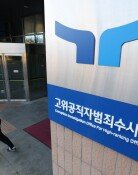Lenient punishment due to inability to access the damages
Lenient punishment due to inability to access the damages
Posted February. 08, 2024 07:35,
Updated February. 08, 2024 07:35
‘Zero years in Korea vs. at least 10 years in the U.S.’
Last month, a court sentenced Mr. A, a former researcher who smuggled key drawings of Samsung Electronics subsidiary Semes' 'supercritical semiconductor cleaning equipment' to China, to 10 years in prison. However, no sentence was made for the amount of damage caused by the technology leak. The prosecution estimated the damage at about 220 billion won (165 million U.S. dollars), but the court did not accept it because it is difficult to calculate the damage amount.
In contrast, the U.S. system requires courts to calculate the amount of damages directly and reflect it in the sentence without fail. According to the results of The Dong-A Ilbo’s consultation with several law professors and lawyers, if the U.S. court had recognized the 220 billion won damage, the sentence would have been increased by at least 10 years and one month and up to 12 years and seven months. This applies only to a first-time offender. Legal experts said that if he had a prior criminal record, the sentence would have been increased by at least 17 years and six months and up to 21 years and 10 months.
In the U.S., tech theft carries a minimum sentence of zero to six months in prison based on the U.S. Federal Sentencing Commission's sentencing guidelines. The sentence is increased depending on the amount of damage caused. If it is a first-time offense and the amount of damage is 220 billion won, the minimum sentence increases to at least ten years in prison. "The sentence is increased if the offender is a repeated offender, if the technology was leaked overseas, or if the offender received the money in exchange for the crime," said a legal expert.
The South Korean Supreme Public Prosecutor's analysis of 496 cases in which the defendants were convicted for technology theft from 2015 to January of last year show that none of the judgments took into account court-calculated damages in sentencing. In 23 cases (4.6 percent) that the court specified the amount of damages, there were direct damage such as equipment theft.
bjk@donga.com







